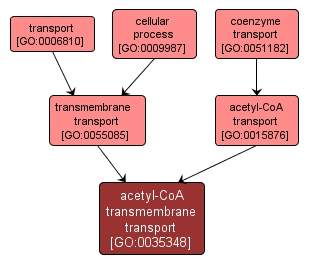| Desc: |
The process whereby acetyl-CoA is transported from one side of a membrane to the other. Acetyl-CoA is a derivative of coenzyme A in which the sulfhydryl group is acetylated; it is a metabolite derived from several pathways (e.g. glycolysis, fatty acid oxidation, amino-acid catabolism) and is further metabolized by the tricarboxylic acid cycle. It is a key intermediate in lipid and terpenoid biosynthesis. |














